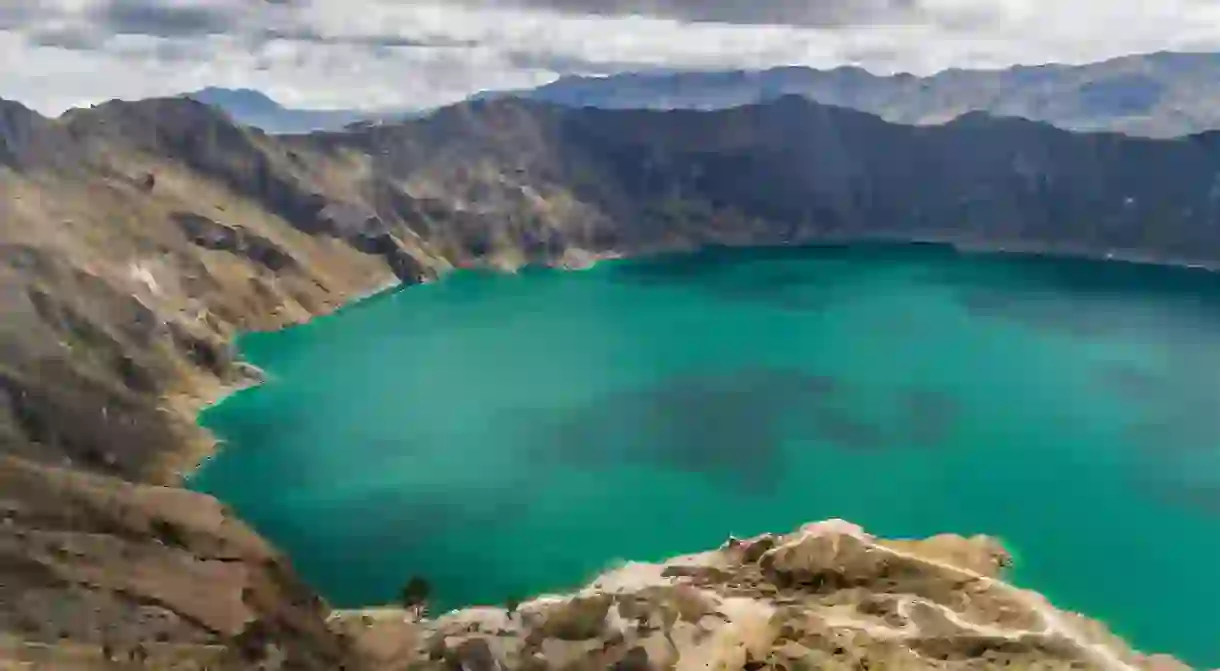The Most Spectacular Andean Peaks in Ecuador

As the home of the third-highest active volcano in the world and one of the highest mountains on earth, Ecuador is a haven for climbing volcanoes and other mountain peaks. These are some of the most stunning peaks across the whole of the Ecuadorian Andes.
Want to discover Ecuador with a local guide at your side? Join our eight-day adventure to discover its cultural and natural highlights with our Local Insider and a small group of culturally curious travelers.
Volcán Cotopaxi
Natural Feature

While Cotopaxi may be the third-highest active volcano in the world, reaching the summit is far from the most difficult in the world – however, it is a technical climb that requires special equipment. Less than half of the climbers actually reach it because of altitude sickness and poor acclimatization, but those up for the challenge should book a tour in advance. If you don’t fancy hiking to the summit, hiking around Laguna de Limpiopungo is much less strenuous and, on clear days, offers superb views of the volcano. Want to see it for yourself? You can go horse riding in the Cotopaxi National Park as part of Culture Trip’s specially curated eight-day Ecuador adventure, led by our Local Insider.
Volcán Rucu Pichincha
Natural Feature, Hiking Trail
Rucu Pichincha is one of the most-visited attractions in Quito and can be reached on the TelefériQo cable car to enjoy the fantastic view of the city – from here, it takes approximately three hours to walk up to the summit of Rucu Pichincha. It’s best to go in the morning before the rains start – often in the early afternoon – and to bring along someone who knows the way. Keep your eyes peeled for rabbits, curiquingue falcons and chuquiragua flowers along the route.
Laguna Quilotoa
Natural Feature
A hidden gem in Ecuador, Quilotoa is a spectacular lagoon within a volcano crater, which you can also visit on our exclusive small-group Ecuador trip. On cloudless days, it appears turquoise because of dissolved minerals in the water. Unfortunately, you can’t swim in the lagoon, but you can still go kayaking or hike the trail around it, which takes up to five hours – independently or as part of a guided tour.
Volcán Chimborazo
Natural Feature

Chimborazo – the highest mountain in Ecuador – is the highest peak in the world if measured from the center of the Earth: a staggering 20,560ft (6,268m) above sea level. Climbing the summit is not advised for inexperienced hikers and is a great challenge for even professional mountain hikers, so many choose to stop at the first or second shelters. Any farther and a mountain guide is recommended.
Volcán Cayambe
Natural Feature
Cayambe – less popular than Cotopaxi – is the third-highest volcano in Ecuador at 19,000ft (5,790m) above sea level. On clear days, Cayambe and Cotopaxi can be seen from Quito and the valleys. Cayambe is known for beautiful glaciers, which you can easily see hiking up to the Oleas Ruales refuge. Experienced climbers can hike to the summit fairly easily, but generally, it’s best to hire a guide as the routes aren’t well-signposted for tourists wanting to check out the glaciers and Laguna Solitaria – and there have been a few accidents in years past.
Volcán Antisana
Natural Feature
Southwest of Quito toward Napo, Antisana is a favorite climb among experienced climbers mainly because of the mountain’s beauty and rich Ecuadorian wildlife. Climbing to the 18,710ft (5,704m) summit is demanding and quite technical, making it an excellent challenge for experienced climbers. Antisana is a good place to spot condors, hummingbirds and curiquingue falcons.
Volcán Pasochoa
Natural Feature

Pasochoa is one of the easier hikes around Quito. Its shortest route takes about two hours, while its longest is over 10 hours – and a camping spot is available to climbers who start to begin their ascent early enough in the morning. Guides aren’t required to climb the 13,780ft (4,200m) summit because there are plenty of signs and other hikers, as well as a tourist information center in the parking lot providing a map of different trails. Pasochoa is also an excellent place to spot wildlife like butterflies, rabbits and condors.
Volcán Tungurahua
Natural Feature
Visible from the Swing at the End of the World, Tungurahua has fully earned its Kichwa (Quechua) name as ‘Throat of Fire’. Since 1999, the people of Baños have suffered from multiple eruptions and ash damage – and the volcano is still active today. Luckily, Tungurahua is neither too difficult nor too technical a climb. The first shelter – 12,475ft (3,800m) above sea level – takes approximately four hours to reach, but the summit – at 16,480ft (5,023m) – can only be climbed during periods of low volcanic activity on guided tours.
Volcán Illiniza
Natural Feature
Illiniza has two peaks: Illiniza North, 16,818ft (5,126m) above sea level and Illiniza South, 17,220ft (5,248m). Illiniza North can be done by inexperienced hikers and is a popular acclimatization peak for people planning to climb loftier summits like Cotopaxi or Chimborazo – while Illiniza South is considered to be more difficult because of glaciers. Both peaks are recommended to be hiked with a mountain guide to navigate the dangerous terrain and access special equipment.
Volcán Sangay
Natural Feature

With three craters, Sangay is the most active volcano in Ecuador as well as the most isolated. It can take up to a week of trekking through the rainforest to reach the summit, so guided tours are essential. It’s worth bearing in mind that due to weather conditions, there’s no guarantee that the summit – at a height of 17,390ft (5,300m) above sea level – will be reached.













